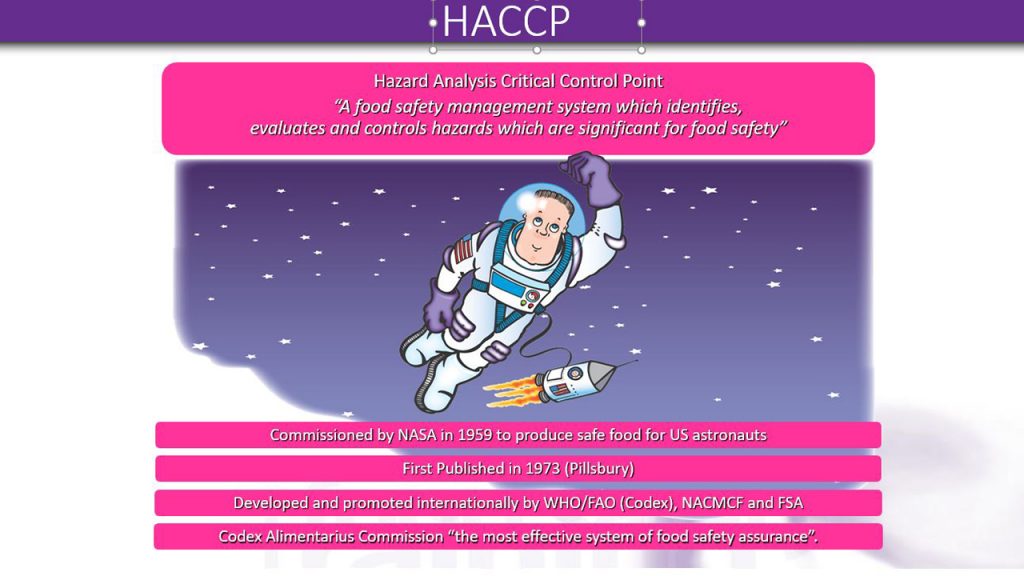origins of HACCP
Commissioned by NASA (National Aeronautics Space Administration US) in 1959 to ensure safe food was provided for US astronauts.
First published in 1973 by Pillsbury.
Developed and promoted internationally by WHO, FAO, (Food and Agriculture Organisation of the United Nations), NACMCF (National Advisory Committee on Microbiological Criteria for Foods – US) and FSA (Food Standards Agency).
HACCP is an internationally recognised food safety management system.
Codex Alimentarius Commission (CAC) claim HACCP is the most effective system of food safety assurance.
The CAC is a committee established by the FAO of the United Nations and WHO (World Health Organisation) to develop internationally accepted food standards and guidelines.
Objectives –
Protect the health of consumers
Promote fair trade practices
Facilitate international trade
Promote coordination of food standards
Representatives of government departments from all over the world. Regular meetings held. (www.codexalimentarius.net)
Food safety management before HACCP:
• Ad hoc identification of hazards, implementing controls, monitoring and corrective actions (good manufacturing and good hygiene practice)
• Observation and supervision of whole process by managers (QA/QC used in manufacturing to control and monitor product safety)
• Science rarely used to determine safe storage, cooking and cooling times/temperatures in catering/retailing. (Usually based on legislation/codes of practice/custom and practice)
• Emphasis usually on cleanliness and “blanket hygiene” i.e. all hygiene problems accorded equal status (exceptions e.g. retorting in canneries). Too much attention focused on walls, floors and ceilings
• Only manufacturers implemented comprehensive systems for the control of chemical & physical contaminants
• The safety of products depended on tried and tested historical systems and standards
• Caterers/retailers usually relied on advice on safe systems from enforcement officers during enforcement visits
• Manufacturers relied on end-product testing (some large retailers – random sampling)
• All sectors relied on periodic internal inspection/audit.
More formal systems likely in manufacture or large retail/catering business which employed auditors
Disadvantages of end-product testing
• Control is reactive, action taken after a problem
• Considerable expertise to interpret results
• Testing may be slow
• Cost of sampling and analysis may be high
• Operation controlled by scientists in ‘remote’ laboratory
• Only applied to a proportion of food (limited samples)
• Does not relate to all potential hazards
• Limited number of staff directly involved in food safety

